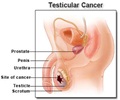A novel way to reduce side effects in head and neck cancer patients receiving radiation treatments has been found by researchers at the University of Michigan Comprehensive Cancer Center.
The scientists say they have developed techniques that help avoid the structures that impact swallowing and eating.The researchers applied highly conformal, intensity-modulated radiation therapy and knowledge of the anatomy and physiology of the structures involved to carefully craft a novel treatment plan that avoids certain muscles in the mouth and throat that are most involved in swallowing.
Generally, head and neck tumours do not spread to these structures.f the 73 patients treated with this technique, all but four were eating a normal diet after their treatment ended and only one was dependent on a feeding tube.
Typically up to 20 percent of head and neck cancer patients remain dependent on a feeding tube after finishing an intensive course of radiation
treatment concurrent with chemotherapy.
"More aggressive treatments for head and neck cancer have improved cancer control, but at the expense of quality of life. In this study, we did not
Advertisement
Scar tissue from radiation treatments to the head and neck often creates long-term problems with swallowing and eating solid foods that do not improve over time.
Advertisement
No patients had a spread of their cancer to the untreated structures and few cancers recurred overall, suggesting it was not harmful to avoid treating these areas. After three years, 88 percent of patients were cancer-free.
The results of the study appear online in the Journal of Clinical Oncology.
Source-ANI
RAS















